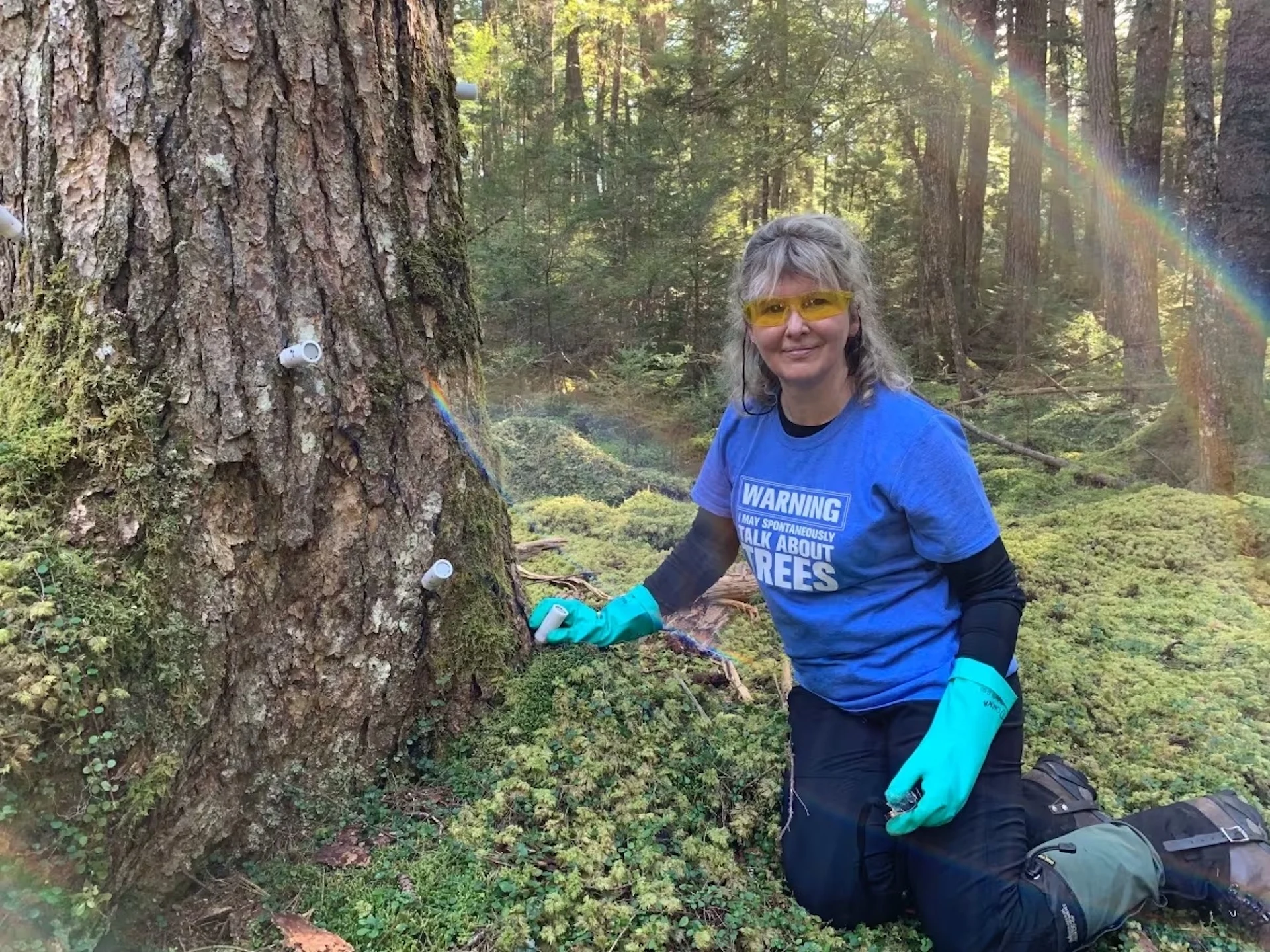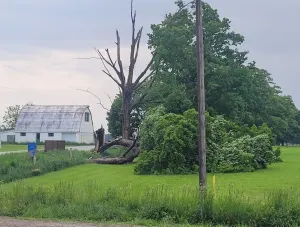
Destructive insect makes its way to Halifax area, attacking hemlock trees
An invasive insect that's deadly to hemlock trees has been discovered in the Halifax area for the first time.
Earlier this month, the Canadian Food Inspection Agency (CFIA) reported the hemlock woolly adelgid was detected at a property in Bedford, the first detection of the insect in the Halifax Regional Municipality.
The egg sacs of the small, aphid-like insect can look like tiny cotton balls or bits of snow and can be found at the base of the tree's needles. The agency says the insect attacks and kills several species of hemlock and spruce.
SEE ALSO: Fighting phragmites: One of Canada's worst invasive species now in N.B.
Donna Crossland, a forest ecologist and head of the provincial adelgid treatment program, said in an interview with CBC's Maritime Noon that the insect has been in the province since at least 2017, including at the Kejimkujik National Park.
"Since then, it has spread to seven of the southwestern counties of Nova Scotia and we were hoping it would just stay there for a while," she added. "So, it's very bad news that we've just found it in Hants County and Halifax County."
The woolly adelgid originates in southern Japan and arrived in the eastern United States in the 1950s, according to the CFIA. They've since spread north and south along the eastern seaboard.
WATCH: Invasive bees discovered in Canada may be a serious threat to native populations
Crossland said adelgids are only able to crawl for a short time after they hatch and are then immobile. They stick their feeding lubes into the bark of the tree and live off the sap for the rest of their lives. They also reproduce without a mate, she added, making them prolific when they infect trees.
There is some scientific debate about how adelgids kill hemlocks. Crossland said one theory is that when the insects begin sucking sap from the tree, the tree responds by walling off specific sections of itself, thereby starving it of carbohydrates. This causes the hemlock's needle to fall, thinning the canopy.
The pests have also been able to adapt to colder climates, something that researchers hoped would help slow their spread.
"Of course, we have climate change, which makes our winter not really such a big deal anymore. It's thriving in Nova Scotia, not even getting the winter mortality that places like New York State receive," she said.
"It's spreading so quickly and it's headed to everywhere that there's hemlock in Canada. You may think if you're in P.E.I., 'I've got a hemlock tree over here, it's not going to get here.' Yes, it will."
WATCH: What makes a plant 'invasive', and what harm does it really do?
The insects probably made the jump to the Halifax area by humans unwittingly moving them on their clothing or in firewood although they can also travel on the bodies of birds or in the wind.
Hemlocks make up a large portion of the remaining old-growth trees in the province, she said, and losing them means possibly losing that ecosystem. Hemlock also provide shade along streams, helping to cool the water.
"Just thinking of the integrity of salmon and trout, these cold-water fishes that need these waterways to be cooled.… Hemlock is such a good tree to have growing along streams because it also shuts down when it's very hot out and it doesn't drink up all the water like a hardwood tree does," she said.
Crossland said there are steps people can take to slow the spread of the insects, including avoiding infested areas or using a lint roller on clothing and gear to pick up the fuzzy eggs if they've been in an area where adelgids have been detected.
She also said people should avoid bringing firewood from one part of the province to another.
"Look for signs of the thinning canopies, needles falling," she said. "Have the needles mysteriously fallen off the very tips of the branches? Because [it] attacks only the new growth of the hemlock, and the new growth is at the very tips of the bows.… If there's no needles there, then you know that that's probably a sign."
WATCH: Hogweed has some look-alikes; How to identify these dangerous plants
She added that if people have hemlock trees that are already infested, they may want to consider some type of chemical control while the province works on getting biocontrols in place, such as introducing another insect that preys on adelgids.
"We cannot rid this new species in our forest now it is here to stay, so we need to control it enough that we can mitigate some of the damage and conserve some of our hemlock forests."
The focus is now on maintaining a healthy hemlock population across the province and safely introducing one of its predators, which would happen "though some very stringent oversight," Crossland said.
Thumbnail courtesy of Phlis McGregor/CBC.
The article was originally written for CBC News. It contains files from Maritime Noon.









